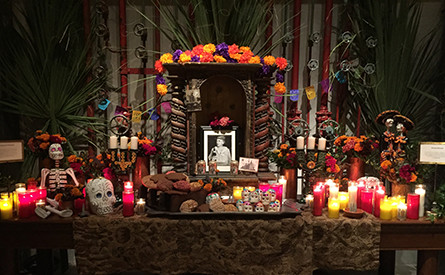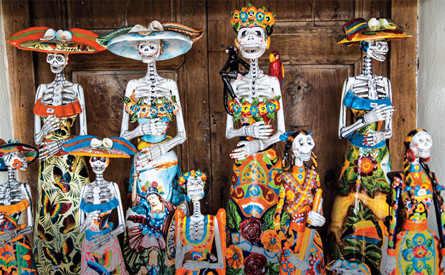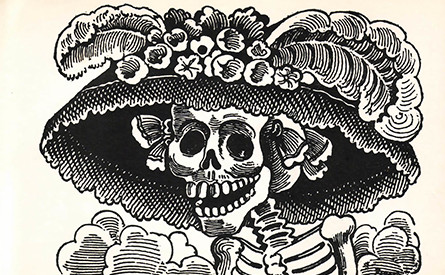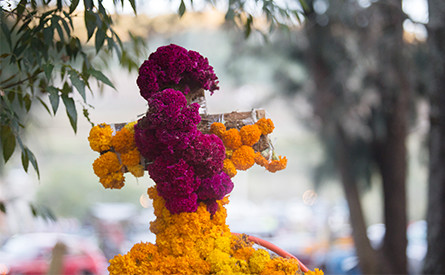Grateful to the Dead
We join many San Antonians and friends and family south of the border in honoring our Dear Departed with a Dia de los Muertos (Day of the Dead) altar. Ours welcomes namesake Emma Koehler back to the brewery she ran very successfully from 1914 to 1942.

This heartfelt custom had its beginnings in pre-Columbian Mesoamerica, took on Christian symbolism when Europeans arrived and has now become a nearly-mainstream celebration across the U.S. Dia de los Muertos is the day spirits of loved ones return to us. It is celebrated on November 1 (Dia de los Angelitos) when the souls of children are revered and on November 2, when adult spirits are honored.
O death, where is thy sting? Countered and cured with a respectful altar filled with color, mischief, and memories. The altar’s furnishings are ofrendas (offerings), symbols of life and death, plus a healthy dose of macabre humor to lessen the sting.

Calaveras and calacas. Skulls, bones and skeletons rendered in papier maché, ceramic, sugar and pastel icing. These symbols of death are a holdover from the Aztecs, who considered death the beginning of new life.
La Catarina. Jose Guadalupe Posada, renowned Mexican illustrator/lithographer of the early 20th century, created this elaborately costumed skeleton, which satirizes the politics of the time and portrays the equalizing effect of death on rich and poor alike.

Cockscomb/Terciopelo Rojo. Velvety and convoluted, the red variety of this eccentric-looking bloom was once connected to the Aztec war god, Huitzilopochtli. Spanish missionaries appropriated it as the sacrificial Blood of The Lamb.

Papel Picado. Colorful, intricate tissue paper banners are said to wave and flutter when the spirits are present.
Votive candles. Each flame represents a departed soul and lights the way for their return.
Dogs. Our best friends in life and our guides in the afterlife.
Copal incense. Since the days of the Aztecs, believers have burned this fragrant tree resin. The scent and smoke carry prayers heavenward.
Pan de Muertos. Bread of the Dead. Traditional sweet bread decorated with symbolic bones and a teardrop in the center.
Water. The elemental liquid quenches the spirits’ thirst after their long journey.
Salt. Purifies and protects the spirits.
Beer. The spirits are offered their favorite beverages — beer, tequila, whiskey, rum, pulque — whatever they liked to imbibe in life.
The Aztecs believed that mourning the dead with tears would make the spirits’ path slippery and difficult to travel, so they honored loved ones with joy. With Emma’s altar, we carry on a 3,000-year tradition of remembering and welcoming.

